#valide hatun
Explore tagged Tumblr posts
Text
Gülçiçek Valide Hatun
One of the first enslaved imperial mothers to have a tomb dedicated to her; Gülçiçek Valide Hatun.

Same as her date of birth, her birth name is unknown though it is sometimes suggested to be Maria.
Though the year of her capture is not documented, nor how she ended up in the Ottoman imperial harem there is a legend about her person; that she was never a concubine but instead a wife of Murad I.
The tale goes as such...
Maria was the young noble Byzantine widow of Aclan Bey and the mother of Yakhsi Bey. She was captured in 1344 when Orhan Ghazi captured the principality of Karasi. After 15 years of widowhood, the troubled mother of Murad: Nilufer, who on her end suggested many suitors for her, all of whom she refused.
Eventually, Murad offered himself and she accepted, changing her name to Gülçiçek. - ( " The European Sultanas of The Ottoman Empire " by Anna Ivanova Buxton )
The tale seems highly improbable as the Ottoman rulers, do not have a strong history of marrying widows, especially ones who have been captured, and thus are considered slaves. However, it is possible, or that at least there is some truth to this tale.
When looking at her name origin Gülçiçek means "rose blossom" in Turkish, meaning she was of slave origin and a convert.
Sakaoglu makes the suggestion that perhaps these women are two different individuals, but Gulcicek herself entrusted her endowments under the care of her son; Yahsi, and as we know Murad has no son under this name.
It might be possible that Gulcicek married a man from Bursa after Murad's death and from this marriage a child was born though this has never confirmed or looked at more carefully by historians.
Gülçiçek became Valide Hatun in 1389, after her son ascended the throne upon the death of his father; Murad, sometime after the battle of Kosovo. She will served as Valide Hatun from 1389 to 1400, upon her death.
Not much is known about her relationship with her child; Bayezid. The only thing I found and noticed is that she is not mentioned as one of the attendees of Bayezid's wedding to Devletşah Hatun in 1381. Instead, his unnamed governess was in attendance. - ( " Bu Mulkun Sultanari " by Necdet Sakaoglu, pg 54, narrated passage by Ashikpasazade )
An interesting point about the mosque in which she was buried is located in a Greek neighborhood in Bursa called the " Night Quarter ". This also indicates her Greek origin, and that she was still related or saw herself as a Greek woman which is why she was buried in this quarter; which had yet to be Islamized at the time. - ( Bu Mülkün Kadın Sultanları by Necdet Sakaoglu )
#history#valide hatun#ottoman history#Gülçiçek hatun#gulcicek hatun#bayezid I#Murad I#bayezid the thunderbolt#Yildirim bayezid#Gulciek Valide Hatun#Gülçiçek Valide Hatun
8 notes
·
View notes
Text



























PERIOD DRAMA APPRECIATION WEEK 2024:
Day 3 - Favourite costume(s):
Kurulus Osman costume by: Serdar Basbug
#kuruluş:osman#kurulus osman#bala hatun#özge törer#lena hatun#seray kaya#malhun hatun#yıldız çağri atiksoy#aygül hatun#buse arslan#ayse hatun#açelya özcan#selvi hatun#zehra yilmaz#selcan hatun#didem balçin#gonca hatun#emel dede#valide ismihan sultan#deniz barut#belgin simsek#alcicek hatun#miray akay#perioddramaappreciationweek24
547 notes
·
View notes
Text

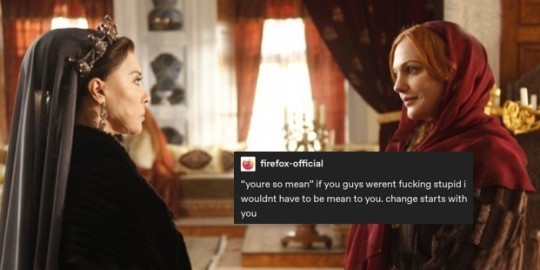
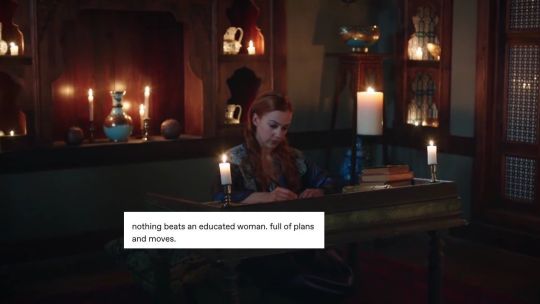


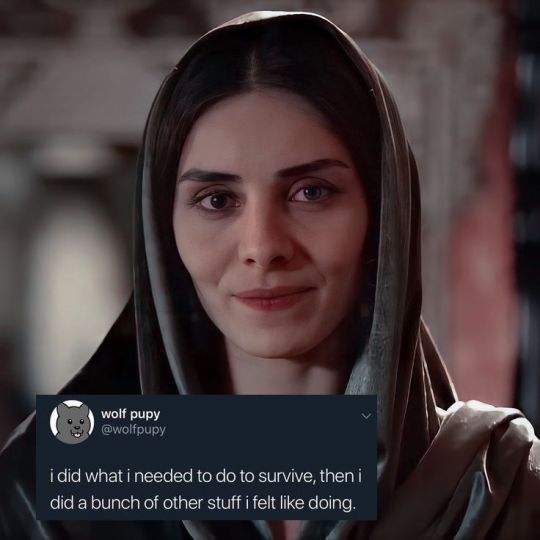

Magnificent Century + text posts and tweets
#haseki hurrem sultan#hurrem#hurrem sultan#hürrem#hürrem sultan#mahidevran hatun#mahidevran sultan#sultan suleiman#hatice sultan#valide sultan#hafsa sultan#perioddramaedit#periodedit#period drama#+ text posts#post
18 notes
·
View notes
Text


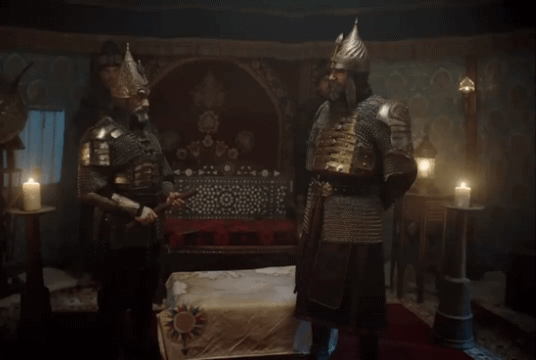

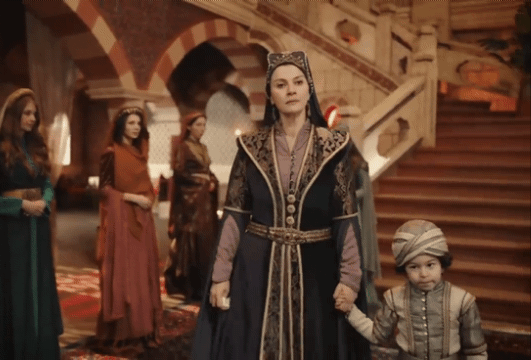




#history#ottoman history#ottoman#ottoman valide#ottoman sultanas#mehmed fetihler sultanı#sultan mehmed ii#mehmed ii gif#mehmed the conqueror#Murad#Sultan murad#sultán#turkish gif#mara hatun#murad#sultans
15 notes
·
View notes
Text
I will never understand why the series decided to ignore the one son one concubine rule. I also will never understand why the series didn't include the death of Suleiman's first sons.
If these were included, I honestly think the series could have been so much better in terms of both plot and characterizations.
Hurrem breaking the one son rule would have caused understandable resentment and fear from Mahidevran, and Suleiman losing his first sons would have been a great chance for Hurrem and Suleiman to build an actual genuine emotional connection and love for each other.
If the show wanted drama, Hurrem and Mahidevran could have both been given different rivalries at the beginning. Hurrem could have rivaled with another concubine for Suleiman's attention. The rivalry could have ended with the concubine beating Hurrem and being punished, which would have given Hurrem her first victory. Mahidevran could have had rivalries with the other mothers for the favors of Ayse Hafsa and Suleiman, which would have course ended when the other sehzades died from plague. This could have triggered Mahidevran's well-known overprotectiveness over Mustafa. Then only after Hurrem gives birth to Mihrimah and Selim, does Mahidevran develop her hatred for Hurrem and their legendary rivalry become apparent.
Instead, the series gave us a love triangle with so much drama that just didn't make any sense. At the beginning of the series, Mustafa is five years old, and it's shown to the audience that Suleiman already had several favorites. A concubine only becomes a favorite if she spends a night with him, so logically, Suleiman must have already cheated on Mahidevran with all of those women over the past 5 years since they had Mustafa. This makes Mahidevran's immediate reaction and hatred of Alexandra so illogical b/c she didn't have any reason to view Alexandra as different from the other favorites. Especially when you consider the fact that Hurrem never attacked or insulted Mahidevran until after Mahidevran provoked her.
While I have always enjoyed the first episodes of the series, I can't help but wonder what could have been had the writers included these elements, which in my opinion, would have both improved the series' historical accuracy but also it's drama and overall plot.
#magnificent century#opinion#sultan suleyman#hurrem sultan#muhtesem yuzyil#muhteşem yüzyıl#mahidevran hatun#mahidevran sultan#valide sultan
24 notes
·
View notes
Text




✭ Gülbahar Hatun (Seda Akman) — Fatih (2013) Ep.1
5 notes
·
View notes
Text
A Magnificent Century spinoff about young Safiye with Nurbanu as Valide Sultan would be awesome. Please make it happen, it's not too late.
I still wish that we’d gotten more of Safiye vs. Nurbanu. Even if solely in terms of character arc and development.
#safiye sultan#safiye hatun#nurbanu sultan#valide nurbanu sultan#magnificent century#muhteşem yüzyıl
9 notes
·
View notes
Text
Long Shall She Reign
A Muhtesem Yuzyil (Magnifcent Century) inspired HOTD fanfic
Warnings: This fic includes dubcon, pregnancy, childbirth, child loss, miscarriage, stillborn birth, character death, violence and inc3st(Targcest. Uncle/Niece), Underage Sex(mentioned), Brothels/Sex Workers Tags might be added as the fic goes on. Don't like, don't read.
Aemond Targaryen x Velaryon Strong!Reader (Aemond x Niece OC)

Face claim: Merve Boluğur
Nurisa Sultan(AFAB OC Strong! ) Also known as Princess Visenya Velaryon, Visenya Waters, Nurisa Hatun. Eventully known as: Her Grace the King's Mother, Valide Nurisa Sultan
**Info on Character and slight, minor(but essential) spoilers ahead
Backstory:
Born as Princess Visenya Velaryon, daughter of Princess Rhaenyra Targaryen and Ser Laenor Velaryon, twin to Prince Jacaerys Velaryon. Her dragon egg never hatched, nor did she ever have the opportunity to claim a dragon. As a result, she grew close to her half-uncle, Prince Aemond Targaryen, as they both shared the same predicament. Princess Visenya was a cherished part of King’s Landing during her early years, known to bring smiles to even the sternest members of the King’s Guard (except Ser Criston Cole, but his opinion was one that no one cared for, given he was a right c*nt. Despite the rumors surrounding her parentage, coupled with her lack of a dragon, she remained a carefree and intelligent child. It was said she mastered both Old Valyrian and Zarahani. That was, until the Driftmark Incident.
After leaving King’s Landing with her parents and siblings, she lived at Dragonstone until the funeral of her aunt, Lady Laena Velaryon. She attended the funeral as expected and retired that night to the chambers assigned to her. When her brothers and cousins woke her from her sleep to find her late mother’s dragon, she reluctantly joined them, slipping her dagger into her sleeve.
After the fateful encounter between her uncle, brothers, and cousins, her life was changed forever. Stripped of her title and name, she became Visenya Waters, disowned, and promptly sent to live in King’s Landing, all by Otto Hightower’s decree. But that was not the end of Visenya... not by a long shot.
At the age of eight, she was sent to a brothel. When she came of age, she entertained the advances of strangers and known men alike. Due to mysterious circumstances, she was captured, enslaved, and sold to the Sultanate of Zarahan. Entering the harem while pregnant and scarred, she was taken in by the Valide Sah Sultan. After giving birth to her son, Aethan, and later to Ayse Sultan and Şehzade Murad, while raising her stepson, Şehzade Bayezid, Nurisa climbed the ranks, eventually becoming the Haseki and Legal Wife of Sultan Ahmed. Through multiple trials and losses, the most significant being the death of her son, Aethan, and the deaths of her other children in the cradle or womb, along with the passing of the Valide and, eventually, Sultan Ahmed, Nurisa became Valide Sultan to her stepson, Bayezid, and amassed power and the love of the people. Now, with her children, Ayse and Murad, halfway across the world—in Westeros of all places—Nurisa is forced to return and confront the family who abandoned her.
She left Westeros a slave and a bastard, and returned as Valide-Kabir Naib-Sultanate Nurisa Sultan, Queen Mother and (former) Regent of Zarahan. Westeros, beware, for hell hath no fury like a woman scorned, especially not Nurisa.
For what is Nurisa to do when she discovers her son is alive? What is she to do when she finds herself in Westeros once more? What is she to do when she encounters a certain One-Eyed Prince?
What any sensible woman would do.
Revenge.
#hotd#hotd fanfic#hotd fandom#hotd oc#Velaryon Strong OC#aemond x niece#aemond targaryen x fem!oc#aemond targaryen x strong!oc#house targaryen#muhtesem yuzyil#or atleast muhtesem yuzyil inspired#Muhteşem Yüzyıl
24 notes
·
View notes
Text
Master Post - Women
Themes
Costumes | Jewellery | Props
Valide Sultan
Hafsa Sultan
Halime Sultan
Handan Sultan
Kösem Sultan
Nurbanu Sultan
Safiye Sultan
Turhan Sultan
Haseki Sultan
Ayşe Sultan (Harem of Murad IV)
Dilaşub Sultan
Hümaşah Sultan (Harem of Ibrahim I)
Hürrem Sultan
Mahidevran Sultan
Muazzez Sultan
Sultanas by birth
Atike Sultan
Ayşe Sultan (Daughter of Kösem)
Ayşe Sultan (Daughter of Şehzade Bayezid)
Ayşe Hümaşah Sultan
Beyhan Sultan (Daughter of Hafsa)
Beyhan Sultan (Daughter of Turhan)
Bican Sultan
Dilruba Sultan
Esmahan Sultan
Fahriye Sultan
Fatma Sultan (Daughter of Hafsa)
Fatma Sultan (Daughter of Kösem)
Gevherhan Sultan (Daughter of Kösem)
Gevherhan Sultan (Daughter of Nurbanu)
Hanzade Sultan
Hatice Sultan (Daughter of Hafsa)
Hatice Sultan (Daughter of Şehzade Bayezid)
Hümaşah Sultan (Daughter of Safiye)
Huricihan Sultan
İsmihan Sultan
Kaya Sultan
Mihrimah Sultan (Daughter of Hürrem)
Mihrimah Sultan (Daughter of Şehzade Bayezid)
Nergisşah Sultan
Şah Sultan (Daughter of Hafsa)
Şah Sultan (Daughter of Nurbanu)
Concubine Sultanas
Defne Sultan
Farya Sultan/Farya Bethlen
Gülbahar Sultan
Mahfiruze Sultan
Meleksima Sultan
Mihrünnisa Sultan
Rana Sultan
Concubines & Harem Members
Afitap Hatun
Akile Hanim
Anna Hatun
Ayşe Hatun (Harem of Şehzade Mustafa)
Cihan Hatun
Dilşah Hatun
Efsun Hatun
Elanur Hatun
Elif Hatun (Harem of Şehzade Mustafa)
Fatma Hatun
Firdevs Hatun
Firuze Hatun
Gülfem Hatun
Gülnihal Hatun
Gülsen Hatun
Hanife Hatun
Hazal Hatun
Helena Hatun
Katerina Hatun
Mahfiruz Hatun
Nazenin Hatun
Neze Hatun
Nurbahar Hatun
Olga Hatun
Rümeysa Hatun
Sadıka Hatun
Sanavber Hatun
Şayeste Hatun
Yasemin Hatun
Zarife Hatun
Unnamed Harem Members
Servants
Afife Hatun
Canfeda Hatun
Cennet Hatun
Daye Hatun
Derya Hatun
Dudu Hatun
Elif Hatun (Servant of Gevherhan Sultan)
Emine Hatun
Esma Hatun
Eycan Hatun
Fahriye Kalfa
Fidan Kalfa
Gülbahar Kalfa
Gülperi Hatun
Gülşah Hatun
Gülşah Kalfa
Hatice Kalfa
Hircan Kalfa
Kumru Hatun
Lalezar Kalfa
Melek Hatun aka Madame Margaret (Servant of Farya Bethlen)
Melek Kalfa (Servant of Fatma Sultan)
Meleki Hatun
Menekşe Hatun
Nadia Hatun
Narin Kalfa
Nazlı Hatun
Nigar Kalfa
Nilüfer Hatun
Sedef Hatun
Ottoman Citizen
Armin Hatun
Cevher Hatun
Dilanur Hatun
Eleni Hatun
Esmanur Hatun
Ester Hatun
Foundation Ladies
Hanım Ağa
Kalika Hatun
Rakel Hatun
Sabiha Hatun
Zeynep Hatun
Unnamed Istanbul Citizens
Europeans
Anna Jagiellon
Carmina
Catherine of Brandenburg
Gabriella Sfenza De Feo
Gracia Mendes Nasi
Isabella Jagiellon
Princess Isabella Fortuna
Portia Gritti
Sara Hatun
Signora Benetto
Silvia Conterini
Unnamed European Characters
Other
Aybige Hatun
Eftelya Hatun
Rita Hatun
Saliha Hatun
#Muhteşem Yüzyıl#Muhteşem Yüzyıl: Kösem#Magnificent Century#Magnificent Century Kösem#Magnificent Century Kosem#Master Post
17 notes
·
View notes
Text
Ties that Bind will also be inspired by this show. It really is a masterful production. I can't wait to start delving into Hürrem's story as well.

Kösem Sultan as depicted by the Venetian School in the 17th Century.
A young Greek girl who was kidnapped and sold to the Ottomans. She married Sultan Ahmed and became the most powerful woman in the Ottoman Empire. She ruled the Empire from behind the scenes until her son Murad IV ascended to the throne. She was famous in her day for her charitable works.
She was assassinated in 1651 at Topkapi Palace in Istanbul. She was in her 60s when she died. Kösem Sultan ruled during the so called “Sultanate of Women”, an era when the wives and concubines of sitting Sultans had a remarkable amount of power.
#original work#ties that bind#magnificent century#magnificent century kösem#kösem sultan#sultanate of women#mahpeyker kösem valide sultan#anastasia hatun#mahpeyker hatun#valide kösem sultan
45 notes
·
View notes
Text








I just learned how to edit and i spent my entire afternoon doing this. Its my first time watching mc, i'm trying to avoid bigger spoilers to draw my own conclusions.
Hurrem is a tough character, most of the time I wonder why they made her a protagonist (when I get annoyed by all her drama). She is stubborn, vindictive, suspicious, jealous, explosive and disrespectful.
This scene its on E38, she tried to kill Isabella because she had feelings (and sex) with her polygamous man (which it is something that it will always make me laugh), her monogamous christian spirit must be needing a break after living on a Harem, she literally want to destroy everything related romantically to Suleyman.
I used to see that as such childish thing to do, then i remembered E1 when she was sold as a slave - AS A SLAVE -, went through years without knowing nothing about her family - probably dead - AND THEN, the most powerful guy of their times falls in love with her, it's obvious that anyone in her shoes would grab that love with all their strength.
She was thrown into completely new customs and a system totally different from what she knew. Mahidrevan, Ibrahim and Valide has their bizarre aliance that repressed Hurrem - Daye Hatun, Sumbul, Gulsah too as pawns - without pity or mercy.
Valide shouldn't be surprised at all by her rebellious and vengeful way, In this particular episode she (and the other ladys) are expecting an extreme punishment to Hurrem and when it didn't happened they got sooo mad, they just wanted Hurrem gone so they can do nothing and nothing all day long.
In E38, Valide questions Suleyman about the immensity of Hurrem's power and how powerful the influence of this power is on him… He doesn't even give her a concrete answer, not only because he doesn't want to discuss this particular subject with his mom, but because he doesn't even know how to explain what that ruthena does with his heart, this clips above this text shows that, and yeah, I don't buy that when he said to Pargali that he was calm because he already knew where the princess were.
--
I want to bring more clips of nigar and Ibrahim, let it out my thoughts about this amazing ship but i read something here that told me that theres more coming soooo.....
If you read til here, please apologize the mistakes, i'm 🇧🇷, english its not my first language
#magnificent century#muhteşem yüzyıl#sultan suleyman#hurrem sultan#chocking#gif#the way he looks at her
20 notes
·
View notes
Text
Mistakes in the Magnificent Century part III
(title, ranks and traditions)
Some facts might be the same or very similar to the ones in previous parts,but they will be discussed from different angle.
1. Valide Sultan title
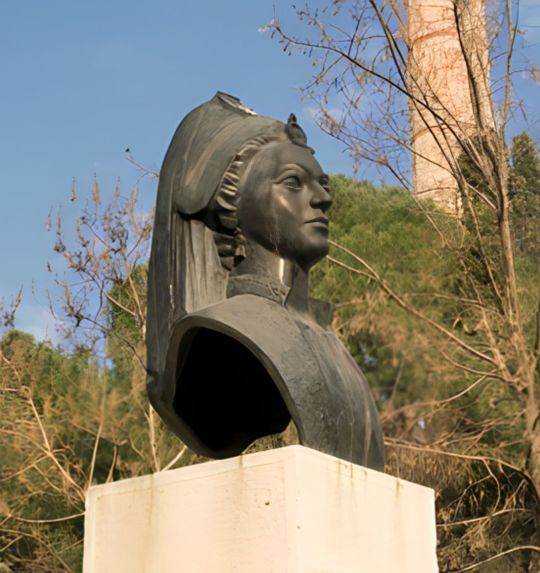
As I have spoken in the previous chapters, pre 1520 mothers of sultans were not sultans at all, they were titles as hatuns, though treated with utmost respect. In 1520 as Suleiman the Magnificent ascended the throne, he bestowed the title of Sultan to her mother Ayşe Hafsa, thus making her the first person in the ottoman history to become sultan from slavery. However, for Ayşe Hafsa being Sultan was not the same as the Valide Sultan that we know today. She was sultan yes, and she was the mother, so "Valide" was the proper address,from her children, as it was for every mother in the Ottoman empire, she was registered as "the mother of Sultan Suleiman", therefore in some sense, we can say she was not "Valide Sultan".
The first person,who actually made the "Valide sultan" a thing and officially registered herself was Nurbanu. So, the first Valide sultan with its full meaning was not Hafsa,but Nurbanu, who was registered as Valide Afife Nurbanu Sultan.
2. Haseki Sultan and Hürrem's marriage.
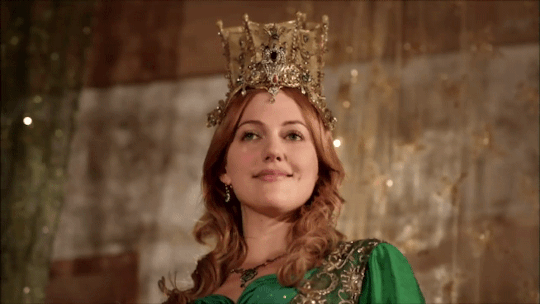
There were more than just several miscon- ceptions about the subject in the show.
First and foremost it was created specifically for Hürrem,so neither Hafsa nor Mahidevran have ever had the title. It also brought another mistake about Hafsa,that I will explain below,but now I will just make clearer how, when and why the status was created.
It was almost definitely created in mid-1534 after the death of Ayşe Hafsa Sultan and was probably legalised by their marriage, which by some sources is mentioned to be in 1533. If this is right, then it would mean, Suleiman married Hürrem before he gave her the status of Haseki and the marriage only freed her,but the most common and for me the most logical version is that after the death of Hafsa Sultan, Suleiman married her and gave her the title.
The death of Hafsa Sultan is a crucial part in the story, nor because she had some kind of objection towards Hürrem or her promotion,but the legal status of Hürrem reached its peak of necessity after her death. As we know, Ayşe Hafsa was a trusted ally and Confidant of uprising Sultan, even during his time as shehzade, so during the campaigns, his mother was the supervisor of the capital and his family, so the sultan could go to war without worrying about what he was leaving behind. However, after Hafsa's death things changed, Süleiman lost beloved mother and most trustworthy person around him, he needed to act immediately,as the campaign was near. He needed someone,whom he could entrust Harem, Family and the capital. His children were little, Sisters(whom by the way he trusted very much) were all married and Hürrem did not have a proper rank. It is said that he also discussed the candidate of high ranking harem servants, one and most promoted one of whom, in my opinion, would have been Gulfem, but he finally found the best possible solution that would affect his empire for centuries. He married Hürrem, gave her the rank of Haseki Sultan and left her in charge of the Harem, Family and the empire.
Hürrem became the first Haseki sultan in history.
Misusage of the title did not and here and there, not only the status and function,but even relevance of achievement was changed here. In the very first episode, Nigar kalfa made it clear that giving birth to a son, was enough to achieve it however, originally only the chosen ones could become Hasekis until its relevance faded during Murad's reign and completely lost exclusivity during Ibrahim's.
Essentially, the original function of haseki sultan was filling the absence of Valide, therefore only Hürrem and Nurbanu can be considered as the "original Haseki Sultans". Later many women were given the status, however the show made it wrong. Mahidevran,Mahfiruz and Halime never held it, however Şevikar, referred as Şevikar hatun in the show, was actually Haseki Şevikar sultan, the fifth Haseki of Ibrahim, three of whom, Ayşe, Mahinerv and Saçbağli, were left out, which is kind of understandable, because they had no importance in plot, unlike Turhan, never became Valide,unlike Saliha Dilaşub and Muazzez and had no influence on Ibrahim,Unlike Şevikar and Humaşah.
Their social standing is also misportrayed in the show, where Haseki ranks below and bows to imperial princesses, while in real life it was the other way around.
3. Daughters of Ottoman Princesses
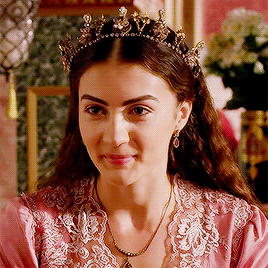
In the show, we met three daughters of the ottoman princesses: Esmahan,Huriçihan and Humaşah. They are referred to as Sultans,but in real life the daughters of imperial princesses were not called so,instead they had the title Hanimsultan and ranked even below the imperial consorts. The only exception to that was Humaşah, the daughter of Mihrimah Sultan, who received the title and prestige of the Sultan.
4. Harem Kalfa

In the show, they are just giving people the rank left and right. Nigar was already a high ranking, trusted servant of harem,but it turned out that she had only been there for 6 years. Fidan hatun was banished for attacking Sultan,but after a while she returned and became Kalfa, in Kösem melek hatun received rank out of the blue etc.
In real life, however, becoming kalfa was a long process. As we know,there were hundreds or even thousands of girls in the harem,but only a handful of them would become favourites,but what would happen to others? After ten years of being a harem resident some of them would have been transferred from harem and soon married off, some could by freedom, while others, usually the smartest and most responsible ones,would go to a special school that lasted two years, they would revive extensive training, both intellectual and physical, after that they could return in harem as teachers and overseers and if they were good enough they could promote.
There was actually quite a complicated hierarchy of harem servants,not only there were Kalfa's who had duty to supervise certain works like food or laundry(later even coffee),but there were administrative ranks, that they could achieve:
Mistress chief treasurer(Baş Hazinedar usta): she was head of the harem treasury.
Treasurers(Hazinedars): there were other hazinedars as well, who worked in harem treasury. Baş hazinedar usta was their direct superior.
Imperial Kalfa(Hünkar Kalfası): Personal kalfa of the padişah.
Lady stewardess(Kahya kadin/Kethüda Hatun): she ranked below imperial consorts,but her role raised during sultanate of women, when Gülfem and Çanfeda held the office, they were right hand women of Chief Harem managers(Hürrem and Nurbanu) therefore second in command of the Harem.
Senior Kalfa(Büyük Kalfa): Head of Kalfas, she was responsible for literally everything that was happening in the harem, sultans and şehzades treated her with respect and called "my kalfa" or "your grace"
Lady secretary: secretary of administrative organs of harem.
Junior kalfa( Kü��ük Kalfa): Senior kalfa was their direct superior. They had ranks within( second- ranking, third ranking, novice etc.) They were sometimes teachers and daily overseers.
Çanfeda for example entered the harem with Nurbanu, so in late 1530's or early 1540's. Nurbanu became favourite and went to Manisa, while Çanfeda remained in the old palace, in 1566 she was already a high ranking kalfa in the old palace, when Nurbanu called her. That would mean she was sent to train as kalfa in late 1540's or yearly 1550's, therefore she would have a decade or two to raise in ranks.
5. Princely harem.

In the magnificent century, prince usually gets his harem, whole in Topkapi palace, which is the lie through and through. They went even further and made up with the rule that the prince can not have a child with their concubine until they get their province to rule. Why would they be allowed to have concubines,but not having a child, when contraception is still unreliable.
Actually, their case was far more easier, princes would revive their sanjaks while still very young, their mothers, governesses and close servants would carefully choose their harem and leave the palace with their mother and full sisters. That also brought another mistake in the show. In the flashbacks, we can see Ayşe Hafsa and Hatice visiting Suleiman in Manisa, however Ayşe Hafsa along with Fatma and beyhan left for Manisa with Suleiman in 1512, while Hatice,being 4 years older than Suleiman, got married the same year.
6. Regency
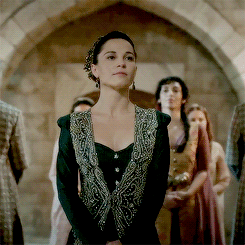
They introduced Kösem's regency as something unheard of,while completely neglecting Handan and Halime.
Handan was the first woman ever to rule as regents in her son's stead. She appointed viziers, discussed political matters and built a trusted circle for her son.
Halime was not officially registered regent but due to the insanity of her son, paşas asked her to rule the state after the rebellion she herself organized.
Kösem's and Turhan's regency is well known, so I will not speak about it.
7. Kösem's wedding

Not exactly the mistake as it is not proven, but as the event is highly unlike, I'll just put it there.
In 1609 it is said that Ahmed had four children with two women,but neither of them were married to him. In the two latters, one form 1612 and other from 1616, the 1612 letter straight out mentions her as sultan's concubine, who he loves the most and in 1616 she is mentioned as juts Haseki,but nothing is said about the marriage( I am not adamant about him not marrying her,I am just saying that it's unlikely, however I admitt she might indeed was concubine in 1612 and after the death of Mahfiruz, Ahmed married her and raised her stipend),however early in Kösem's regency vencians questioned ottoman practice, that mother of sultan was honoured and even given the regency,despite not being married to his father. As we know in Venice and generaly in Europe, source of power for woman was her marriage and not just motherhood. That is a time, when it was "unrevealed" that ahemd married her before he died,(if that latter is to be believed than Kösem and Ahmed did not marry in 1613), now it was actually thought that it was false information used by Kösem to strengthen her position in the eye of Venice as they needed friendly relation with them. That is not widely accepted,but it can be strengthened by the fact that Vencians still did not believe it, so perhaps they knew for sure that it was lie?
8. The death of Halime sultan and Mustafa.

In the show Halime, like many others, is victim of making Kösem seem more powerful, while Mustafa was killed by Murad. In real life, Mustafa died of natural causes, probably because of epilepsy in 1539, he was buried in Hagia Sophia and the coffin was placed in a mosque built for him. Halime is buried next to him and no permission of reburial was asked or granted, therefore Halime was not killed by Kösem, she went to the old palace and lived a long life.
9. 1517-1540
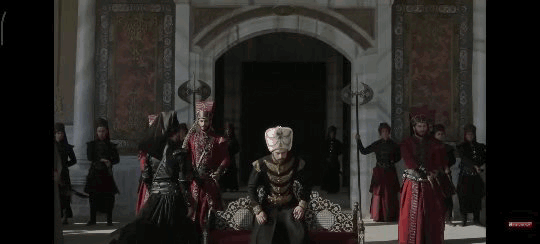
I'll be honest, I don't remember much of those episodes, they were boring and monotonous for me, but what I remember is one part from Kösem's iconic " The state you are talking about is mine" speech. She mentioned that she took over the reins of the state from Ahmed 15 years before the event, well that is a huge lie. Though the show runners tried to make Kösem all powerful, the invincible mastermind behind every single breath people drew in the empire,but she was actually quite powerless from time to time and the period between 1617 and 1623 is one of such. She was still young and inexperienced that time and main powerhouses in the empire were Halime and Osman's faction and she was not the leading force during any of the rebellions, she was allie of Halime, who, according to many historians, had major influence that time and the great impact on Kösem. Some even go as far as claiming that she persuaded Osman to kill Mehmed, so Kösem would take her side.
In short, Kösem did not have reins of sultanate for 15 years,but only about 10.
As I said, I don't remember much about the episodes, but from what I remember, Kösem had something to do with Murad's death. I'll be short on this: that's a lie.
10. Coup of 1648

The show made Kösem something of a filicidal tyrant. However, In real life her tyrannical tendencies appeared only after the death of Ibrahim, which he had nothing to do with. The ones behind the incident were Turhan and her faction. Kösem indeed took part in the Ibrahim's dethronement for the good of everyone,but mainly because she had seen the mad sultan dethroned,but lived. Mustafa had a similar situation,he was dethroned and locked in kafe, while his mother was sent to the old palace, which Kösem was absolutely willing to do. However, Turhan made her move and had Ibrahim executed to get rid of opposition for good, or perhaps because of the old resentment. Things did not go exactly as she had planned though, Kösem became regent and visibly started to avenge Ibrahim's death, it became clear that she was not going to hand over any power to Turhan and after she started to oppose even went as far as attempted dethronement of Mehmed(however she was not going to kill him.)
Therefore the child killing monster the show made her become is straight out a lie. One of her sons died of natural causes and the other was killed by outer forces, that she tried to avenge.
#history#historical drama#16th century#magnificent century#magnificent century kosem#mc: kosem#ottoman empire#ottomanladies#historical events#historical figures#sultanate of women#haseki hurrem sultan#hurrem sultan#nurbanu sultan#kosem sultan#safiye sultan#muhtesem yuzil kosem#historyedit#historical#ottoman sultanas#ottoman history#ottoman#mistakes in the magnificent century
203 notes
·
View notes
Text
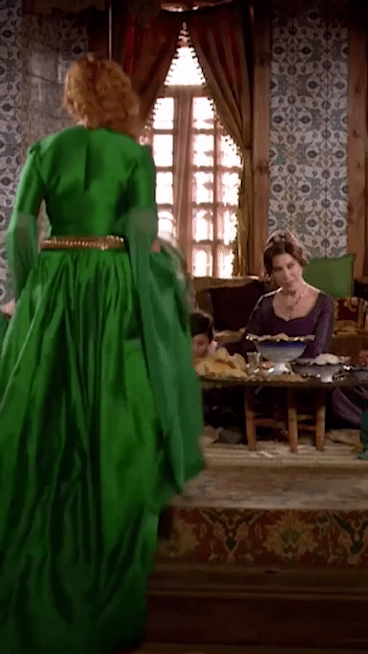

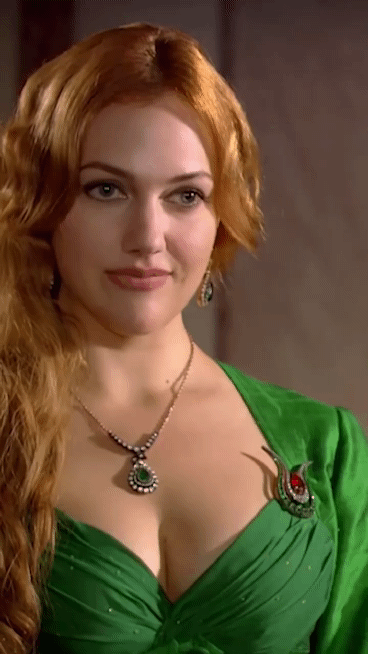
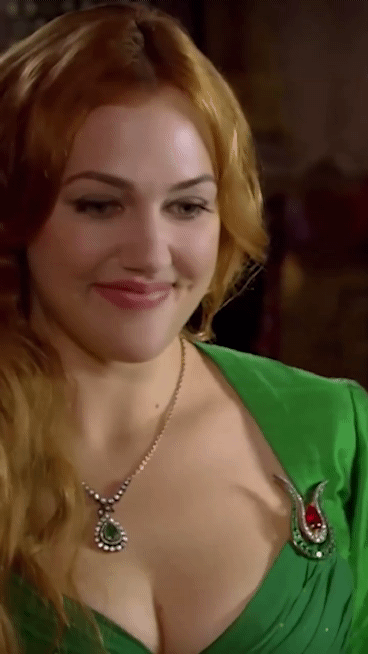
#history#magnificent century#muhteşem yüzyıl#ottoman#sultanas#ottoman sultanas#ottoman history#ottoman valide#hurrem gif#haseki hurrem sultan#hurrem sultan#Hurrem hatun
31 notes
·
View notes
Text

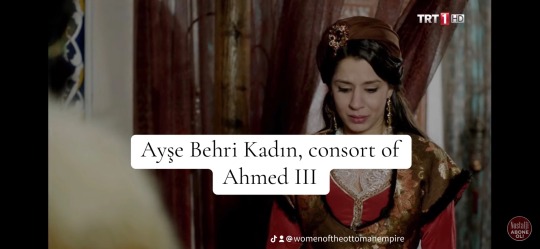
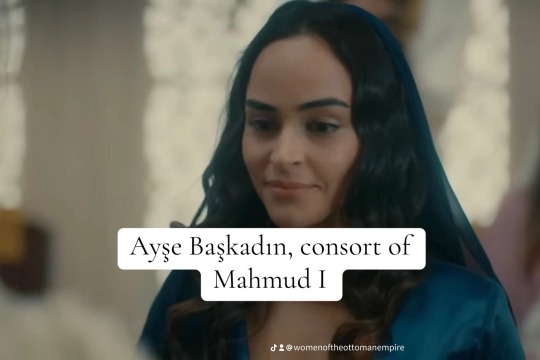



Consorts named Ayşe PT 2
2 notes
·
View notes
Text
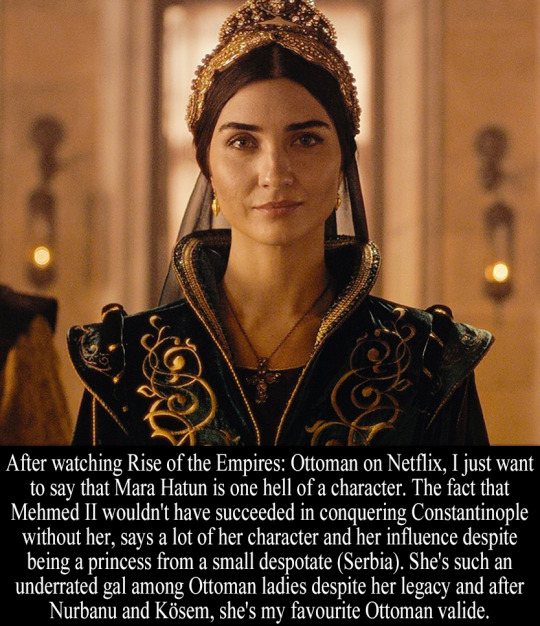
“After watching Rise of the Empires: Ottoman on Netflix, I just want to say that Mara Hatun is one hell of a character. The fact that Mehmed II wouldn't have succeeded in conquering Constantinople without her, says a lot of her character and her influence despite being a princess from a small despotate (Serbia). She's such an underrated gal among Ottoman ladies despite her legacy and after Nurbanu and Kösem, she's my favourite Ottoman valide.” - Submitted by Anonymous
18 notes
·
View notes
Text
A light aspect that magnificent century lacked Selim II brought together several very intelligent female personalities, starting with his wife Nurbanu (who fulfills her role as Valide very well, which shows that Selim II surrounded himself very well with competent people) and in particular befriended the poet Ayşe Hubbi Hatun. It's also refreshing to see a male-female friendship without it turning into romance. My fan girl heart means that Selim is a feminist. Why not show it? P.S: I know that in reality this provides no proof that Selim believes in equality between men and women (it's more of a cry from an assumed "fan girl" of Selim). Moreover, at that time, it was unfortunately far from being current and it is not enough to surround yourself with female personalities to say that you are a feminist or something else… For example there is nothing but to see the son of Alexandre Dumas who wrote in 1872 The Question of Woman, published by the Association for the Progressive Emancipation of Women but which concerns the womens of the Paris Commune called these revolutionaries in disgusting terms “We will say nothing about the female communards out of respect for the real women who they only resemble when they are dead".
#magnificent century#sehzade selim#Sultan Selim II#nurbanu sultan#historical interpretation#Historic#Another historical aspect#women#feminism
24 notes
·
View notes